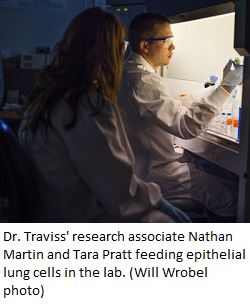 While it’s a pretty well established fact that biodiesel produces fewer particulates than its petroleum counterpart, researchers on a new study want to see if those fewer particulates are also less harmful. This story from Keene State College in New Hampshire says they are using real-world testing to see if those biodiesel particulates are less toxic.
While it’s a pretty well established fact that biodiesel produces fewer particulates than its petroleum counterpart, researchers on a new study want to see if those fewer particulates are also less harmful. This story from Keene State College in New Hampshire says they are using real-world testing to see if those biodiesel particulates are less toxic.
“We began this project using exposure as our measurement of health,” [Associate Professor of Environmental Studies Nora Traviss] explained. “We examined whether or not the pollution created by biodiesel combustion resulted in higher exposure for workers than the pollution created by petroleum diesel. It was very much an exposure assessment.”
With the cooperation of the Keene Recycling Center, Dr. Traviss and her research team mounted particle impactors in the operator’s cabs in machinery at the Center, collecting samples of both petroleum diesel and biodiesel exhaust. The impactors can separate out different sizes of extremely tiny particles, which lets the researchers see exactly what the drivers are breathing. This approach makes Dr. Traviss’ study different from all the others, which collect samples from diesel engines set up in a lab. Dr. Traviss’ samples are real-world. “The exhaust we’re collecting is diluted in the air, it’s going through chemical reactions from the sunlight, and it’s combining with other molecules in the air,” Dr. Traviss explained. “We’re studying the quantity of the particulate matter the driver is breathing and its unique chemical composition, which we hypothesize will be different from particles collected directly from the tailpipe.”
So far, Traviss’ team has confirmed that the amount of particulates in biodiesel exhaust is indeed lower than those from petroleum diesel, although they also found that they are chemically different. They’ll now be using a $400,000 grant from the National Institute of Health to test the toxicity of those particulates.

